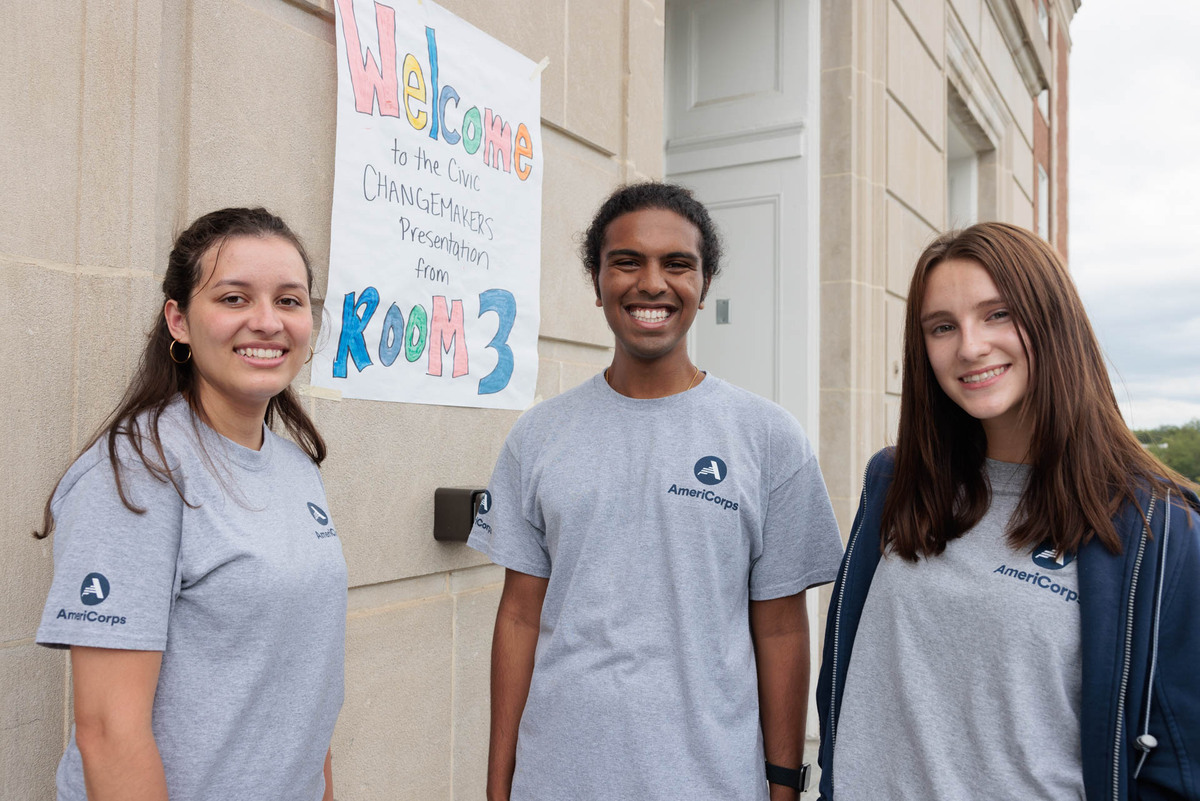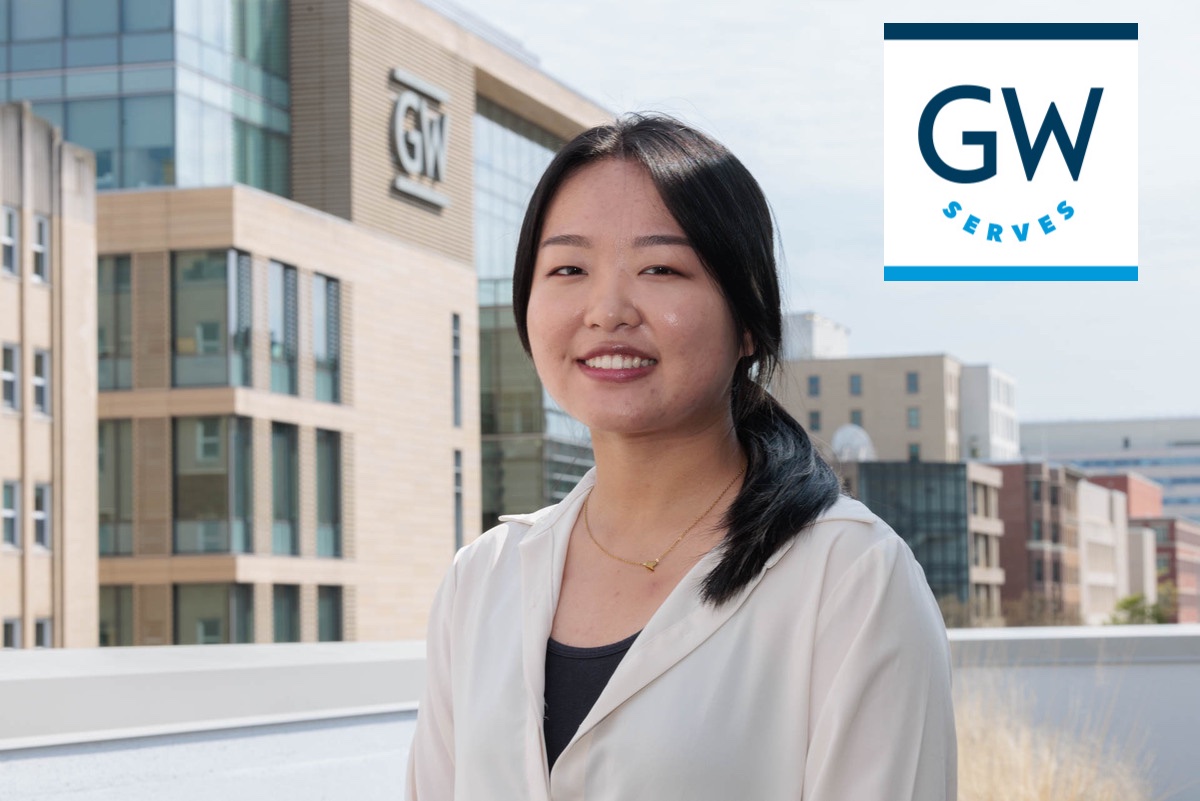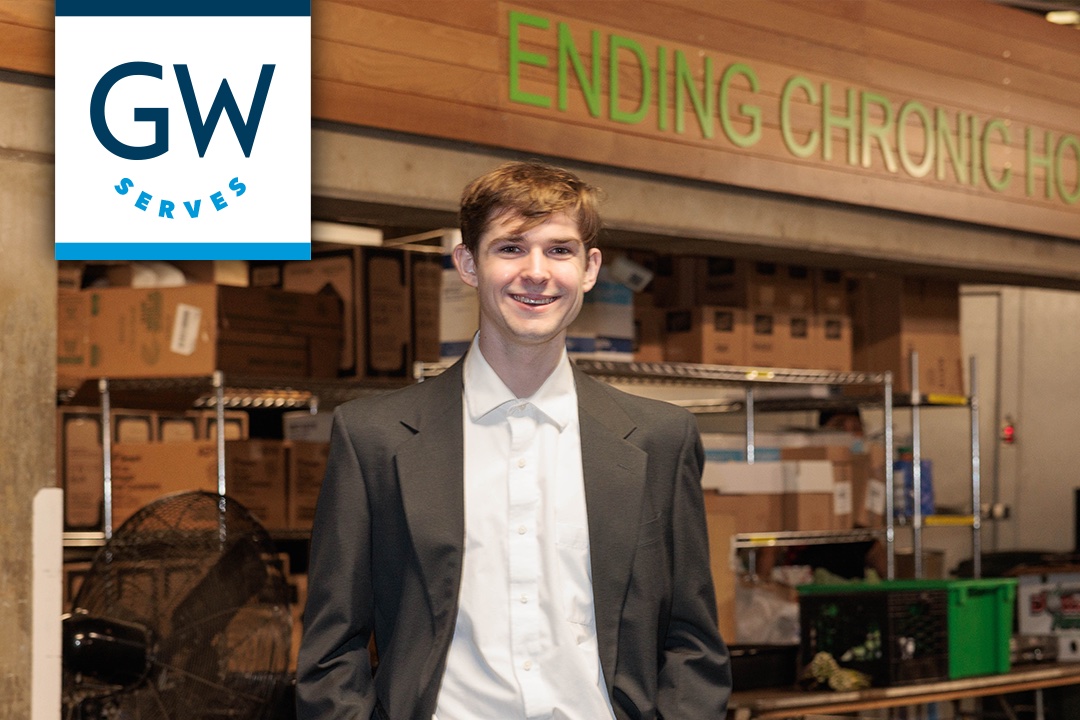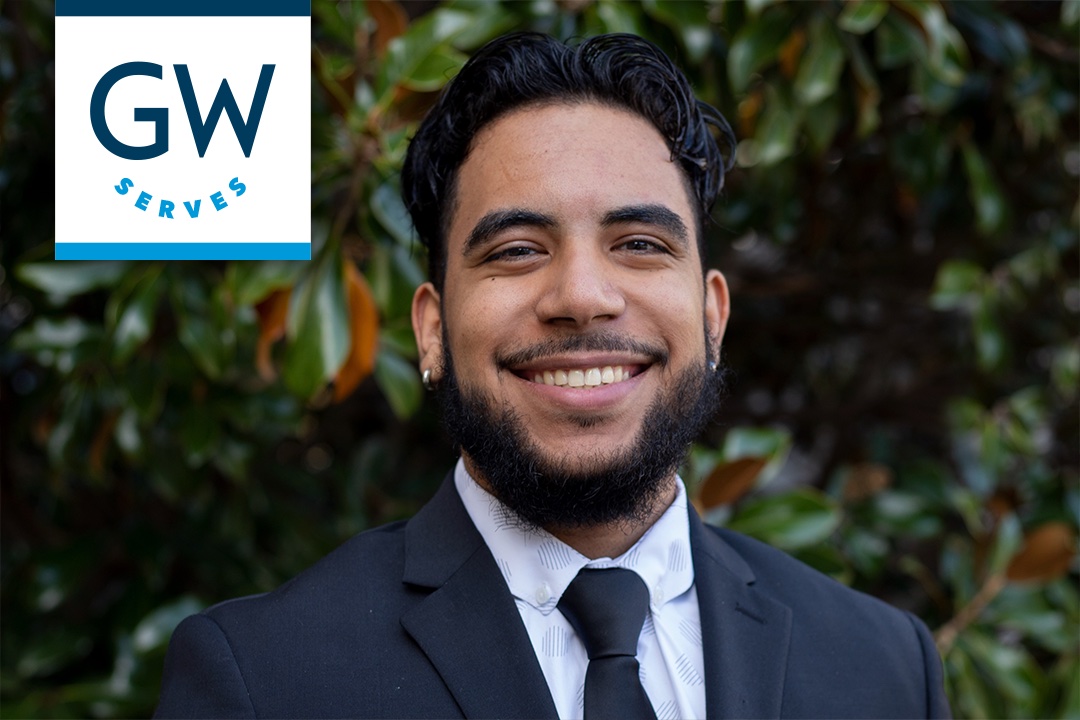On a Friday morning, a student at Sousa Middle School proudly walked a group of adults around the fields and playgrounds to show them where he and his friends play at recess. It was clear by his energy he has a lot of pride in the public institution he attends in Washington, D.C.’s, Southeast quadrant.
But as he approached the soccer field, where he’s surely scored many goals during the lunch hour, he paused and pointed to a spot on the sidewalk.
“That’s where the bullet was,” the young student said referencing an unwelcomed finding a few weeks earlier. He shared that he and his fellow students at Sousa seek more security.
This summer, under the guidance of George Washington University student interns, those middle schoolers took steps to action. While tackling gun violence, crime and other social issues are daunting even for policymakers in Congress just up the road, middle school students in the GW Civic Changemakers summer program gained confidence and skills and learned how to become changemakers and community problem solvers.
GW Civic Changemakers is a free five-week program for middle school students in D.C. Public Schools to develop skills in civic engagement that culminates in a project intended to have a positive impact on their community.
Some students at Sousa, for instance, laid the groundwork to fix a broken gate near the playgrounds to cut off access to people not associated with the school. They collected two pages worth of signatures of concerned students and held meetings with school and community leaders and officials asking what steps needed to be taken to fix the gate.
“It’s really important that when people step into this building, they feel secure,” said GW rising senior criminal justice major Vara Mehra, a student intern at Sousa Middle School who helped with the gate project at Sousa.
GW’s Honey W. Nashman Center for Civic Engagement and Public Service has been offering a version of the Civic Changemaker program for the past six years. This summer’s program included four to five weeks of service-learning at Sousa, Eliot-Hine and Johnson middle schools. It also included Friday field trips to places such as the Martin Luther King, Jr., Memorial, Planet Word and the National Museum of African American History and Culture.
GW interns and leaders, who had three weeks of training prior to meeting with the students, provided mentorship and inspiration to students as they worked on their civic action projects. Thanks to a continued partnership with the Emerson Collective Youth Collaborative, Learn 24 and AmeriCorps VISTA, the Nashman Center was able to expand from 50 to 75 Civic Changemaker program interns living on the GW campus.
As part of Civic Changemakers, the Nashman Center partnered with Sousa and Eliot-Hine for a multiyear research project. Nashman Center post-doctoral fellow Rachel Talbert said the study so far has found that the impact of the program on the college undergraduates is substantial and that middle schoolers enjoy showing off their school to college students who seem genuinely invested.
As Sousa rising eighth-grader Luis Lopez put it, “It was nice to have someone who cared about what we students thought and wanted to help us.”
The program also allowed GW students to feel more connected with D.C. “It’s important to understand the communities and the kids from the communities that you’re coming into,” Mehra said.
On Aug. 4, students at all three schools presented their final projects in a public presentation with parents, friends and community leaders. Their creativity and personalities shown through. One student group, for instance, created an Instagram account to highlight Black businesses throughout D.C. Another did a fashion show to challenge the school dress code policies and the biases they have against Black girls; they also worked with their school to create more equitable dress code enforcement. One student rapped about food insecurity. Another group created a career day for their school, scheduled for Oct 26.
Even in a short amount of time, the program introduced the middle schoolers to community involvement and showed that if they want to make change for a better future, they will have to work for it. And it gave GW students who will soon be entering the workforce intent on creating that change a chance to hear from some of those most affected.
“Every child in every school needs to be engaged in civic action for the betterment of society toward the specific goals of anti-racism and social justice,” said rising junior human services and social justice major Joshua Abraham, an intern at Eliot-Hine. “What's really key for this program is the learning experience being in schools, spending so much time with students at an overlooked age and getting to know their needs as well as their personalities.”
While certain gates hopefully close, the doors to civic engagement have been opened.





